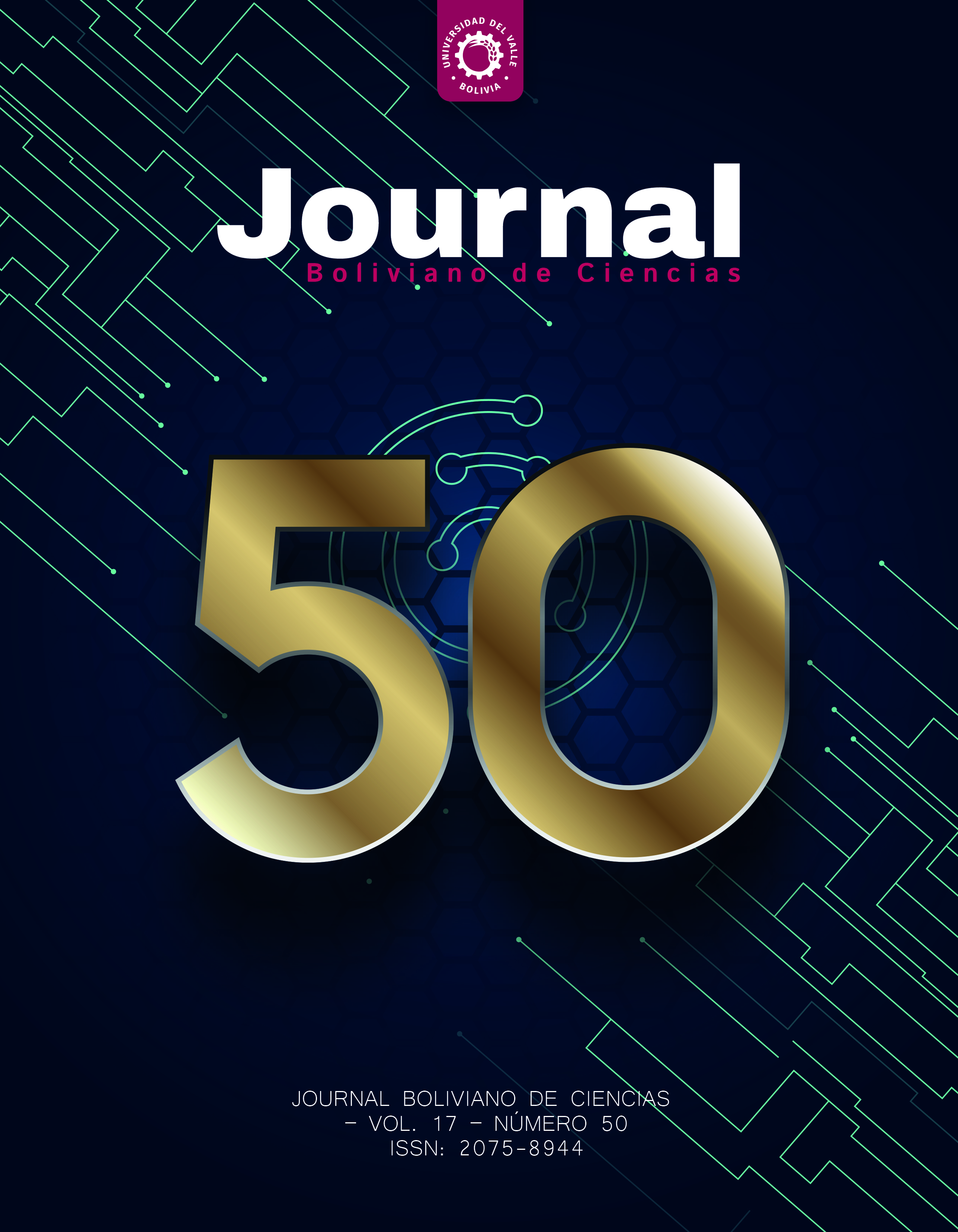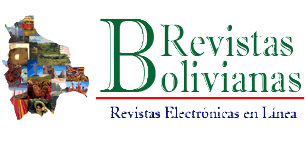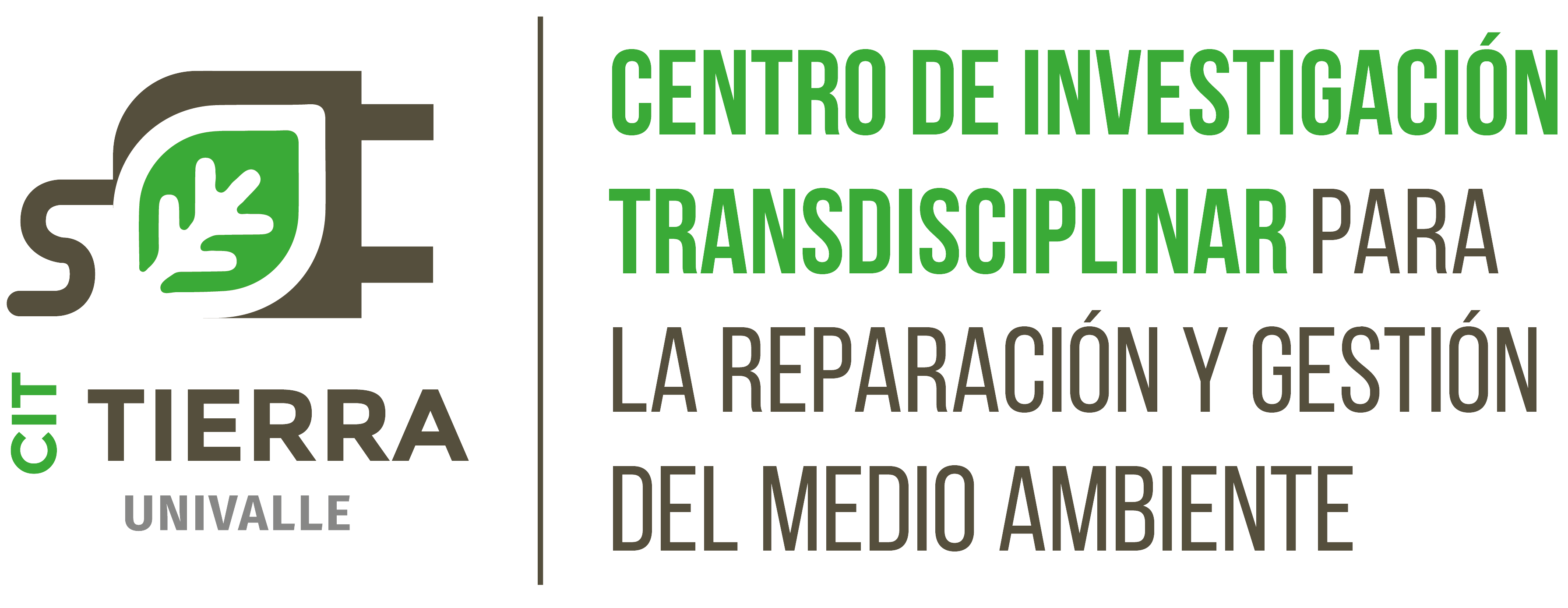Clusters, superspreading and percolation in the COVID-19 pandemic
DOI:
https://doi.org/10.52428/20758944.v17i50.22Keywords:
Clusters, COVID-19, Dispersion, Percolation, SuperspreadingAbstract
Within the context of the COVID-19 pandemic, this paper has been written for the purposes of scientific popularization for non-specialists. The aim of this work is to explain the role of interaction groups in certain phenomena, such as superpropagation and percolation, which characterize the dynamics of virus propagation. Some notions necessary to describe these dynamics of an epidemic are presented, such as the number of reproduction and contact networks that, throughout this document, for simplicity is also called a cluster.
Downloads
References
Akira, E., Abbott, S., Kuscharski, A. J., y Funk, S. (2020). Estimating the overdispersion in COVID-19 transmission using outbreak sizes outside China, Wellcome Open Research, 5(67). https://doi.org/10.12688/wellcomeopenres.15842.3
Althouse, B. M., Wenger, E. A., Miller, J. C., Scarpino, S. V., Allard, A., Hébert-Dufresne, L., y Hu, H. (2020). Stochasticity and heterogeneity in the transmission dynamics of SARS-CoV-2. pre-print- arXiv:2005.13689. Retrieved November 28, 2020, from https://covid.idmod.org/data/Stochasticity_heterogeneity_transmission_dynamics_SARS-CoV-2.pdf
Asadi, S., Wexler, A. S., y Kappa, C. D. (2019). Aerosol emission and superemission during human speech increase with voice loudness. Scientific Reports, 9, 2348. https://doi.org/10.1038/s41598-019-38808-z
BBC News (2020). Coronavirus: France's first known case 'was in December'. BBC News. Retrieved November 28, 2020, from https://www.bbc.com/news/world-europe-52526554
Blumberg, S., y Lloyd-Smith, J. O. (2013). Inference of R(0) and transmission heterogeneity from the size distribution of stuttering chains. PLOS Computational Biology, 9(5), e1002993. https://dx.doi.org/10.1371%2Fjournal.pcbi.1002993
Bonasera, A., y Zhang, S. (2020). Chaos, Percolations and the Coronavirus Spread. Frontiers in Physics, 8, 171. https://doi.org/10.3389/fphy.2020.00171
CDC, Centers for Disease Control and Prevention, Coronavirus, Appendix A - Glossary of Key Terms: Close Contact. Retrieved February 05, 2021 https://www.cdc.gov/coronavirus/2019-ncov/php/contact-tracing/contact-tracing-plan/appendix.html
Crawley, M. J. (2012). The R Book. Wiley. ISBN 978-1-118-44896-0.
Davis, S., Trapman, P., Lairs, H., Begon, M., y Heesterbeek, J.A.P. (2008). The abundance threshold for plague as a critical percolation phenomenon. Nature, 454, 634–637. https://doi.org/10.1038/nature07053
Drosten, C. (2020). Ein Plan für den Herbst. Die Zeit. Retrieved November 28, 2020, from https://www.zeit.de/2020/33/corona-zweite-welle-eindaemmung-massnahmen-christian-drosten
DWH, Technical Solutions Simulation Services (2020). COVID-19: The Search for Superspreaders. DWH, Technical Solutions Simulation Services. Retrieved November 28, 2020, from https://www.dwh.at/en/blog/covid-19-die-suche-nach-den-superspreadern/
Frasser, C., Cummings, D. A., Klinkenberg, D., Burke, S. S., y Ferguson, N. M. (2011). Influenza transmission in households during the 1918 pandemic. American journal of epidemiology, 174(5), 505-514. https://doi.org/10.1093/aje/kwr122
Hamner, L., Dubbel, P., y Cappron, I. (2020). High SARS-CoV-2 Attack Rate Following Exposure at a Choir Practice — Skagit County, Washington, March 2020. Morbidity and Mortality Weekly Report (MMWR), 69, 606–610. http://dx.doi.org/10.15585/mmwr.mm6919e6
Hilbe, J. M. (2011). Negative Binomial Regression (Second ed.). Cambridge, UK: Cambridge University Press. ISBN 978-0-521-19815-8.
Kersten, H. (2006). "What is percolation?" Notices of the AMS, AMS. Retrieved November 28, 2020, from http://www.ams.org/notices/200605/what-is-kesten.pdf
Kupferschmidt, K. (2020). Why do some COVID-19 patients infect many others, whereas most don’t spread the virus at all? Science Mag. Retrieved November 28, 2020, from https://www.sciencemag.org/news/2020/05/why-do-some-covid-19-patients-infect-many-others-whereas-most-don-t-spread-virus-all
Leclerc, Q. J., Fuller, N. M., y Knight, L. E. (2020). What settings have been linked to SARS-CoV-2 transmission clusters? Wellcome Open Research, 5, 83. https://doi.org/10.12688/wellcomeopenres.15889.2
Lloyd-Smith, J., Schreiber, S., Kopp, P., y Getz, W. M. (2005). Superspreading and the effect of individual variation on disease emergence. Nature, 438, 355-359. https://doi.org/10.1038/nature04153
Lloyd-Smith, J. O. (2007). Maximum Likelihood Estimation of the Negative Binomial Dispersion Parameter for Highly Overdispersed Data, with Applications to Infectious Diseases. PLoS ONE, 2(2), e180. https://doi.org/10.1371/journal.pone.0000180
Mello, Y. F., Squillante, L., Gomez, G., Seridonio, A. C., y Souza, M. (2020). Epidemics, the Ising-model and percolation theory: a comprehensive review focussed on Covid-19. arXiv e-prints. Retrieved November 28, 2020, from https://arxiv.org/abs/2003.11860
Ministry of Health Labour and Welfare (2020). Japan’s COVID-19 Response. Information on Coronavirus disease 2019 (COVID-19). Retrieved November 28, 2020, from https://www.mhlw.go.jp/content/10900000/000635891.pdf
NDR-Info, Drosten, C., y Hennig, K. (2020a). Die rote Murmel kontrollieren. Coronavirus-Update, Folge 44. Retrieved November 28, 2020, from https://www.ndr.de/nachrichten/info/coronaskript202.pdf
NDR-Info, Drosten, C., y Hennig, K. (2020b). Eine Empfehlung für den Herbst. Coronavirus Update, Folge 54. Retrieved November 28, 2020, from https://www.ndr.de/nachrichten/info/coronaskript222.pdf
Nishiura, H., Oshitani, H., Kobayashi, T., Saito, T., Sunagawa, T., Matsui, T., Wakita, T., MHLW COVID-19 Response Team, y Suzuki, M. (2020). Closed environments facilitate secondary transmission of coronavirus disease 2019 (COVID-19). Medrxiv.org Preprints-Database. https://doi.org/10.1101/2020.02.28.20029272
Oliveira, G. (2020). Early epidemic spread, percolation and Covid-19. Journal of Mathematical Biology, 81, 1143–1168. https://doi.org/10.1007/s00285-020-01539-1
Quian, H., Miao, T., Liu, L., Zheng, X., Luo, D., y Li, Y. (2020). Indoor transmission of SARS‐CoV‐2. Indoor Air, 00, 1-7. https://doi.org/10.1101/2020.04.04.20053058
Riou, J., y Althaus, C. L. (2020). Pattern of early human-to-human transmission of Wuhan 2019 novel coronavirus (2019-nCoV), December 2019 to January 2020. Eurosurveillance, Europe's journal on infectious disease surveillance, epidemiology, prevention and control, 25(4), pii=2000058. https://doi.org/10.2807/1560-7917.ES.2020.25.4.2000058
Schneider, M. F. (2020). Wir können Corona noch stoppen. Die Zeit Online, Wissenschaft. https://www.zeit.de/wissen/gesundheit/2020-09/corona-ausbruch-stoppen-physik-neuinfektionen-perkolation-zweite-welle
Stauffer, D., y Ammon, A. (1994). Introduction To Percolation Theory: Revised Second Edition (Second Edition ed., Vol. ISBN 9780748402533.). Taylor & Francis.
Tang, S., Mao, Y., Jones, R. M., Tan, Q., Ji, J. S., Li, N., Shen, J., Lv, Y., Pan, L., Ding, P., Wang, X., MacIntyre, C. R., y Shi, X. (2020, November). Aerosol transmission of SARS-CoV-2? Evidence, prevention and control. Environment International, 144, 106039. https://doi.org/10.1016/j.envint.2020.106039
Thurner, S., Klimek, P., y Hanel, R. (2020). A network-based explanation of why most COVID-19 infection curves are linear. Proceedings of the National Academy of Sciences of the United States of America, 117(37), 22684-22689. https://doi.org/10.1073/pnas.2010398117
Downloads
Published
How to Cite
Issue
Section
License
Copyright (c) 2021 Melanie Maldonado

This work is licensed under a Creative Commons Attribution 4.0 International License.
Authors who publish with this journal agree to the following terms:
- Authors retain copyright and grant the journal right of first publication with the work simultaneously licensed under a Creative Commons Attribution License 4.0 that allows others to share the work with an acknowledgement of the work's authorship and initial publication in this journal.
- Authors are able to enter into separate, additional contractual arrangements for the non-exclusive distribution of the journal's published version of the work (e.g., post it to an institutional repository or publish it in a book), with an acknowledgement of its initial publication in this journal.
- Authors are permitted and encouraged to post their work online (e.g., in institutional repositories or on their website) prior to and during the submission process, as it can lead to productive exchanges, as well as earlier and greater citation of published work.















